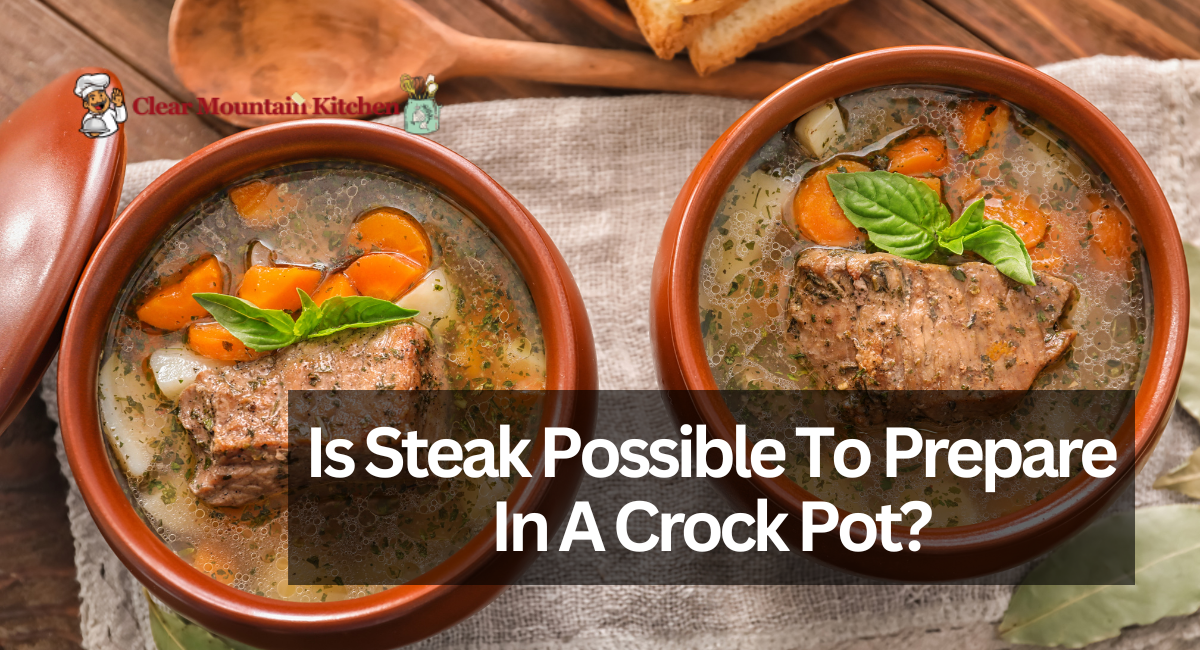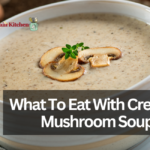As we investigate whether steak can be prepared in a crock pot, we journey into the realm of slow-cooked indulgence. By exploring this all-encompassing manual, you will discover the techniques for preparing flavorful, tender steaks with the ease of a slow cooker.
Gain an unparalleled culinary experience by learning the methods, suggestions, and formulas that transform tough sirloin cuts into succulent, melt-in-your-mouth specimens.
Is Steak Possible To Prepare In A Crock Pot?
While not the most traditional approach to cooking steak, preparing sirloin in a slow cooker or crock pot is possible. When using tougher cuts of meat, slow-cooking sirloin in a crock pot can produce an exceptionally flavorful and tender dish. Here is a fundamental guideline for accomplishing it:
- Chuck steak, round steak, or flank steak are examples of harsher steak cuts to consider. Slow cooking yields tender flesh from these cuts by facilitating the breakdown of connective tissues.
- To prepare the steak, sprinkle it with your choice of herbs, spices, and seasonings. As an alternative method of augmenting flavor, the sirloin may be seared for a few minutes on each side in a hot skillet before its placement in the crock pot.
- Add liquid to the slow cooker along with the seasoned sirloin. This may consist of Worcestershire sauce, beef bouillon, red wine, or a combination of these for enhanced flavor. Supplement the flavor with aromatics such as garlic, shallots, and herbs.
- Set the crock pot to high or low heat, according to personal preference and available time. Steaks should be cooked for an average of two to four hours over high heat or four to eight hours over moderate heat.
- The extended cooking time of slow simmering steak ensures the meat is cooked to a desirable level. We employ a meat thermometer to determine whether the sirloin has reached the intended doneness level.
Is Browning A Sirloin Required Before Placing It In A Crock Pot?
- Although preheating the sirloin in a crock pot is not required, doing so can significantly improve the dish’s appearance and flavor. A savory crust is developed by caramelizing the steak’s exterior in a hot skillet before slow cooking, and the dish gains dimension.
- Searing the steak caramelizes the naturally occurring sugars and proteins on its surface, imparting the final dish with a more opulent and intricate flavor profile.
- Browning the steak imparts a visually pleasing hue and a pleasant feel to its texture. A further benefit is that it can improve the dish’s appearance when served.
- In contrast to the tenderizing effect of slow cooking, which occurs during the initial browning of the sirloin, which aids in the sealing of juices, the resultant product is more succulent and moist.
- Nevertheless, it is possible to prepare steak in the crock pot without browning it beforehand, should time be of the essence or if you rather forego this procedure for the sake of convenience. Despite having a distinct flavor and texture profile from seared steak, the slow cooking method will continue to produce tender flesh.
Does A Slow Cooker Function Without Liquid When Cooking Steak?
- It is possible to prepare steak in a slow cooker without adding additional liquid; however, this method is not generally advised. Crock pots and slow cookers utilize moisture to cook food gradually and tenderly for an extended period. Cooking sirloin without additional liquid may cause the meat to become dry, rigid, or susceptible to sticking to the pot.
- Instead of conventional liquids like broth or wine, one may substitute moist ingredients (e.g., tomatoes, salsa, or a trace quantity of olive oil). These alternatives offer the advantage of supplying moisture to the steak while cooking and preventing it from sticking.
- During cooking, vegetables such as bell peppers, mushrooms, and onions release natural juices that can serve as a moisture source for the sirloin. Layering these vegetables around or beneath the sirloin can add flavor and moisture.
- To aid in retaining some of the steak’s natural fluids, ensure that the slow cooker’s lid is securely fastened to prevent moisture loss during cooking.
- Choose steaks with increased marbling or fat content. The meat can be infused with flavor and moisture by rendering this fat during gradual cooking.
How Do You Determine Whether Steak In A Crock Cooker Is Done?
- The type of steak being prepared and the intended degree of doneness determine when steak is done in a slow cooker or crock pot.
- The most precise method is to prepare the steak’s internal temperature with a meat thermometer. The recommended internal temperatures for rare steak, medium-rare, and well-done are as follows: 125-130°F (52-54°C), 135-140°F (57-60°C), 145°F (63°C), and 160°F (71°C) or higher.
- Employ a utensil to evaluate the steak’s tenderness. When prodded with a fork, the meat is likely done if it falls apart readily or shreds. After an extended cooking time, more arduous cuts, optimal for gradual cooking, should become tender.
- Assess the sirloin visually, considering its cut and cooking duration. It should be thoroughly cooked; if a more brutal cut is utilized, it should pull apart or shred effortlessly.
- It is advisable to adhere to the cooking periods specified in the crock pot recipe for the steak. However, remember that the precise cooking duration may differ depending on factors such as the steak portions’ dimensions, the crock pot’s heat settings, and the particular cut of meat employed.
- Following the desired doneness of the steak, proceed to de-raise it in the crock pot for a few minutes after turning off the heat. Doing so redistributes the fluids, resulting in a more flavorful outcome.
Diversifying one’s repertoire from traditional egg-based breading presents abundant flavorful and adaptable alternatives. By adopting these alternative approaches, one will access a universe of culinary ingenuity, enabling one to accommodate diverse dietary requirements while augmenting preferred dishes’ visual appeal and gustatory qualities. Investigate these substitutes for egg-based breading to enhance your culinary endeavors and reestablish the craft of breading with creativity and gustatory perception.
Your continued readership is greatly appreciated.






